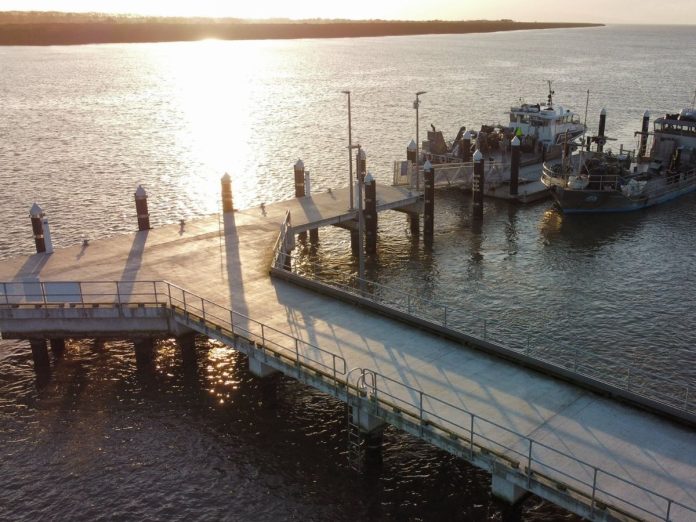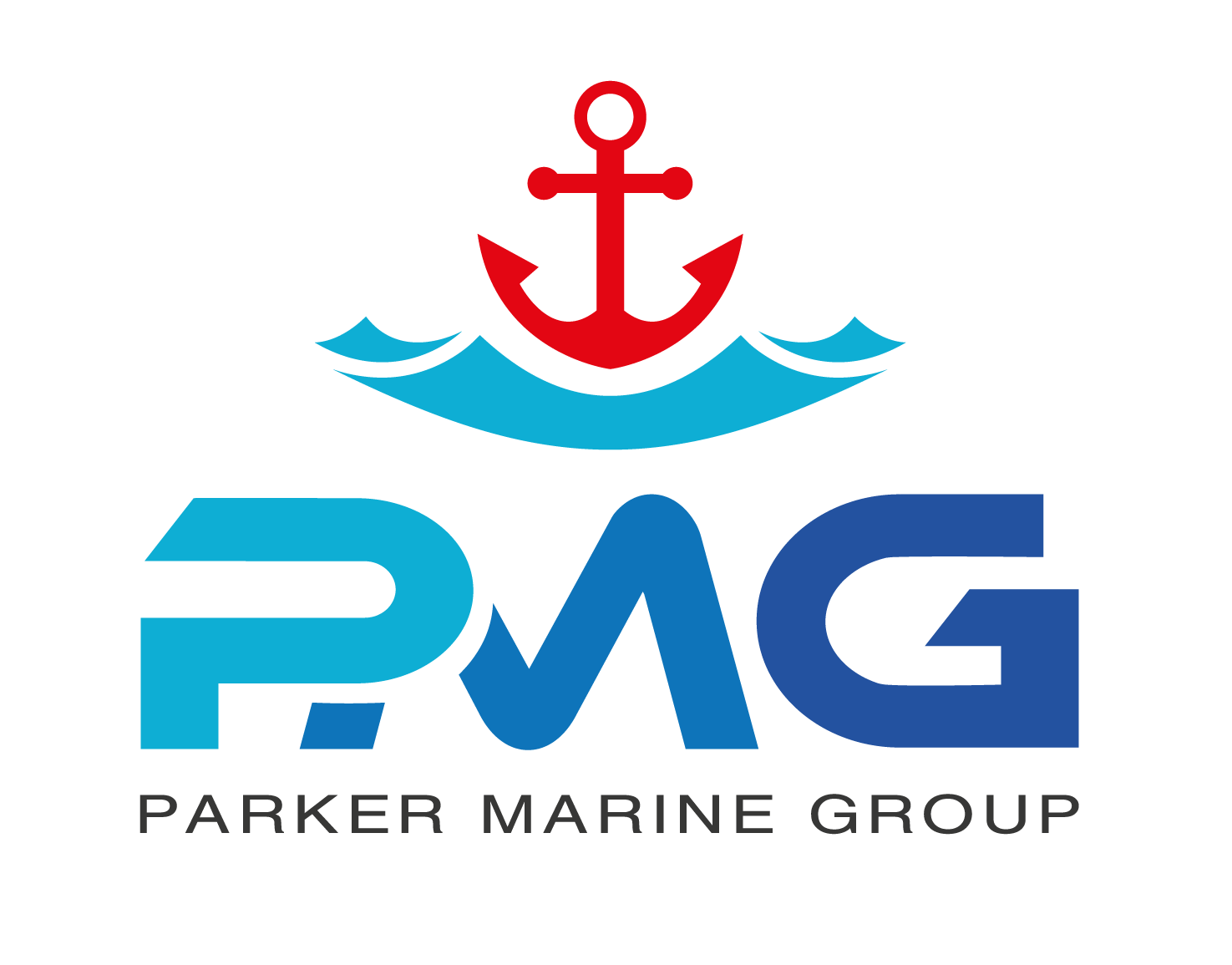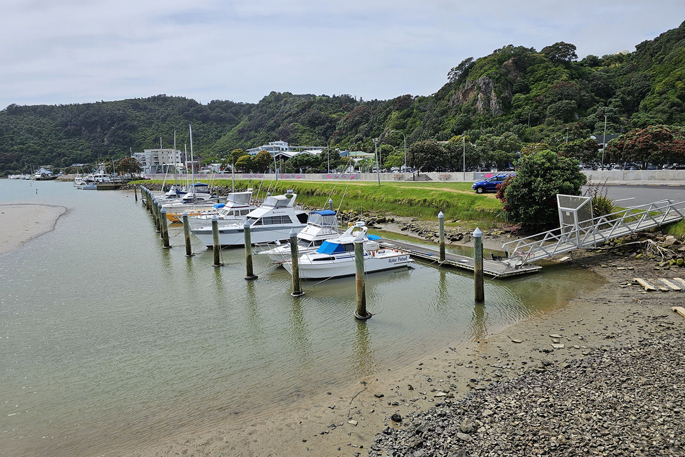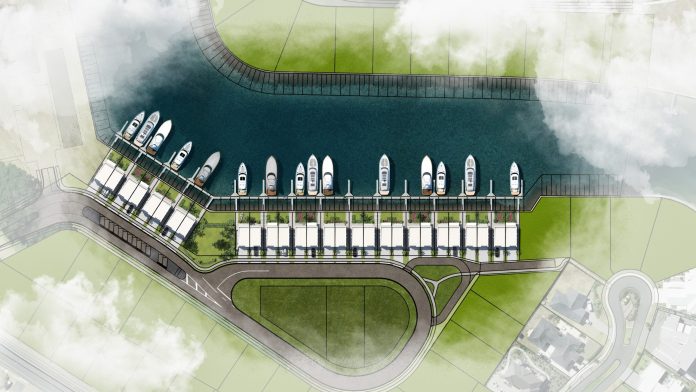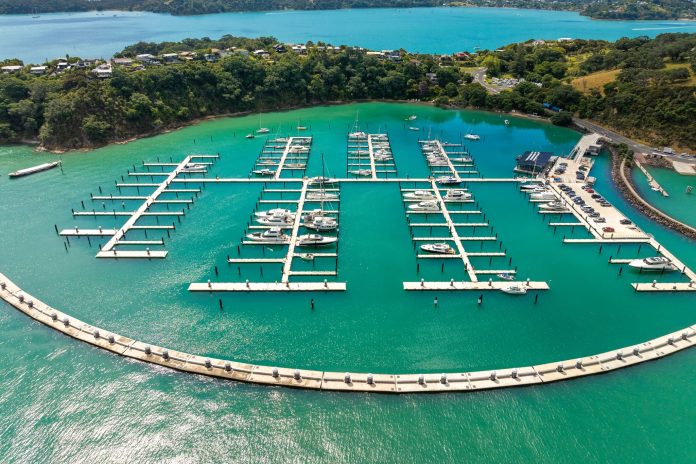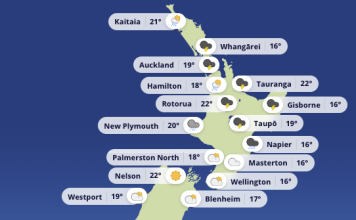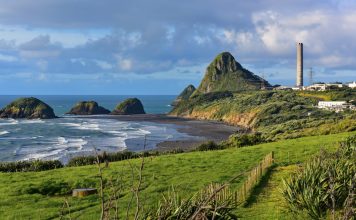The Kōpū Marine Precinct was built to answer a clear demand. For years, local marine operators had been working at full stretch, turning away jobs as boat owners faced long trips to Auckland or Whangārei for even the most routine servicing. Sitting at the gateway to the Coromandel, within reach of Auckland, Hamilton and Tauranga, Kōpū seemed an obvious place to establish a hub that could service both the aquaculture industry and the region’s growing recreational fleet.
By 2018, a feasibility study confirmed the need, and by 2022 Thames-Coromandel District Council had secured resource consent. The $15 million facility opened in mid-2024, complete with a new commercial wharf and floating pontoon, upgraded slipway, and expanded hardstand. The precinct was designed to keep commercial and recreational users separate, with a dedicated trailer-boat ramp and jetty alongside the commercial L-shaped wharf.
The location, however, brings its quirks. The Firth of Thames is shallow around Kōpū, dropping to around a metre at low tide and rising to three metres or more at high water. Smaller boats under five metres can usually launch at all tides, but larger craft need to time their runs carefully—generally within two hours either side of low tide. Deep-keeled vessels will struggle altogether, and anyone launching at dead low needs to watch for rocks. These natural limits help explain why the precinct was set up for workboats, trailer boats and aquaculture operators rather than for yachts on passage.
From the outset, the commercial wharf was locked to the public. Council pointed to strong currents, turbid water and the hazards of cranes and servicing equipment as reasons for restricting access. Recreational users were encouraged to make use of the separate ramp and pontoon, keeping the heavy lifting and slipway operations away from weekend boaties and casual fishers.
Even so, questions soon arose. By 2025, councillors and locals were openly asking whether the precinct was being fully utilised. Reports suggested only a handful of businesses were using the wharf regularly, and uptake fell well short of expectations. A marketing campaign was launched, but scepticism lingered.
Now, in an effort to balance safety with public expectation, Council is trialing weekend and holiday pedestrian access until late October. Locals can finally walk the new wharf for themselves. Whether this trial helps the precinct find its place—as both a working yard and a community asset—will depend on the feedback it generates and the confidence it builds.








